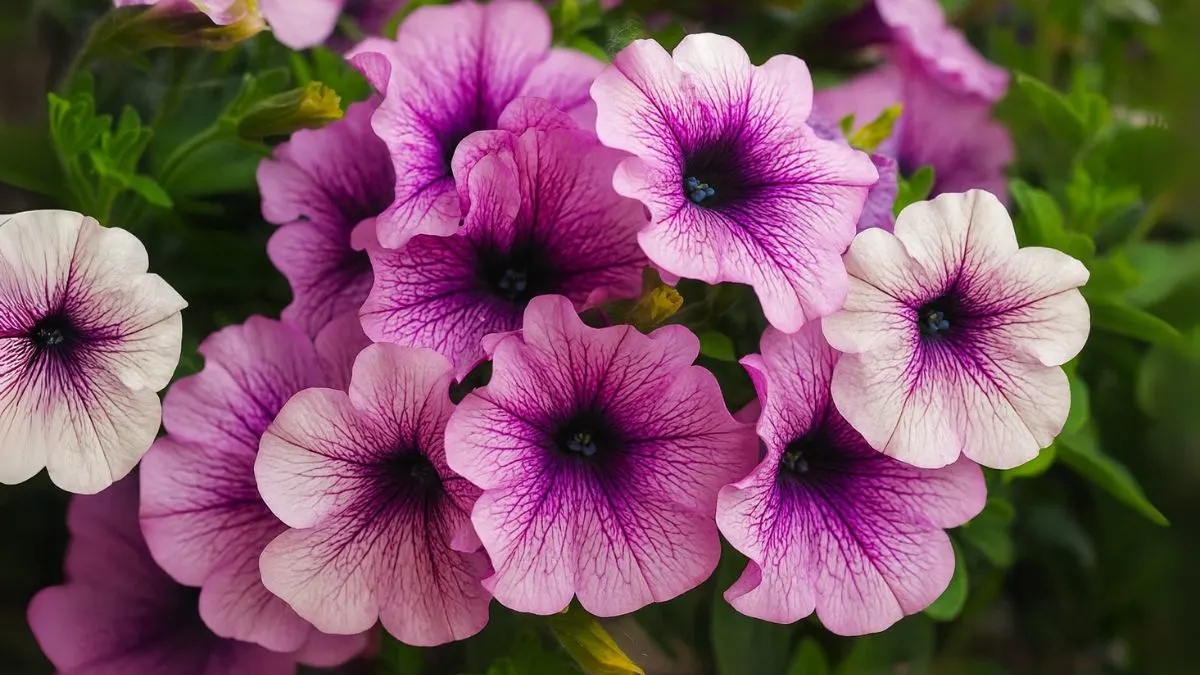Few flowers capture the heart of gardeners around the world like Petunias. Known as versatile, popular flowering plants requiring full sun, well-draining soil, and consistent watering, they offer endless color and charm to any space. Whether cascading from hanging baskets or filling garden beds, petunias are resilient, rewarding, and surprisingly easy to care for.
I remember my very first spring in Toronto, planting petunias in a balcony box. Their rich colors against the city skyline not only brightened my mornings but also taught me how easily these plants can thrive when given the right environment.
Types of Petunias

Petunias are incredibly diverse, and understanding their types helps you select the right one for your garden style.
- Grandiflora Petunias: These produce large, showy flowers and are ideal for containers or hanging baskets. Their big blooms, however, are sensitive to rain.
- Multiflora Petunias: With smaller flowers but greater resilience, these varieties can withstand heavy rains and harsh conditions. They’re perfect for garden beds.
- Milliflora Petunias: Compact in size, with petite blooms, these are great for borders and small containers.
- Wave Petunias: A favorite in North America, wave petunias spread vigorously and create a lush carpet of color.
- Double Petunias: Known for their ruffled, rose-like flowers, they add elegance but require slightly more care.
Care Requirements for Petunias
- Sunlight: One of the most important factors in growing these beauties is light. Petunias thrive in full sun, requiring at least 6 to 8 hours of direct sunlight daily. While Petunias prefer full sun to partial shade, too much shade leads to fewer blooms.
- Soil: For best results, Petunias grow in rich-in-organic, well-draining soil. Always ensure the soil doesn’t retain too much water, as soggy roots can cause rot.
- Watering: They need consistent watering, especially in containers, but avoid overwatering. A good rule is to let the top inch of soil dry before the next watering.
- Fertilization: A balanced, slow-release fertilizer ensures continuous flowering. Petunias are heavy feeders and bloom best with regular feeding.
- Maintenance: Deadheading spent blooms promotes new growth. Pinching back long stems helps maintain a bushy, compact appearance.
Also Read: Grow Clarkia and Watch Your Garden Explode With Color!
Seasonal Planting Guide
Petunias are often treated as annuals. Plant them after the last frost for a long season of color. Many gardeners like to begin seeds indoors 2-8 weeks before the last frost, ensuring they have strong seedlings ready for outdoor planting.
Here’s a quick planting guide:
Requirement |
Recommendation |
Light |
Full sun to partial shade |
Soil |
Well-drained, rich in organic matter |
Water |
Consistent but not waterlogged |
Blooming Season |
Spring to frost |
Benefits of Growing Petunias
- Versatility – From borders to baskets, petunias suit every garden style.
- Long Blooming Season – They provide months of continuous color.
- Pollinator Friendly – Their bright flowers attract hummingbirds and butterflies.
- Air Purification – Petunias have been studied for their ability to absorb certain pollutants.
- Aesthetic Appeal – Their wide color range makes them a designer’s dream.
Personal Experience
During one summer in the USA, I planted Wave Petunias along my driveway. By mid-June, they had spilled across the ground in waves of purple and pink, drawing compliments from every passerby. What amazed me was how they require full sun, well-drained soil, and regular watering, yet gave back so much more in beauty than the effort I put in.
Also Read: Grow Cleome for Bold Blooms That Bees and Hummingbirds Can’t Resist
Common Mistakes to Avoid
- Planting in heavy, waterlogged soil instead of well-draining soil.
- Keeping them in shade when Petunias thrive in full sun, requiring at least 6 to 8 hours of direct sunlight daily.
- Forgetting regular feeding, leading to fewer blooms.
- Overwatering, which can weaken roots.
Petunias are more than just a splash of color in your garden. They are versatile, popular flowering plants requiring full sun, well-draining soil, and consistent watering—yet their care is simple enough for beginners and rewarding enough for experts. With various types to their care requirements, from Grandiflora to Wave Petunias, there’s a perfect variety for every gardener.
Whether you’re in Canada, the USA, or anywhere in the world, adding petunias to your garden ensures vibrant, joyful blooms all season long. Start with rich-in-organic, well-draining soil, give them sunlight, and watch your garden transform.






